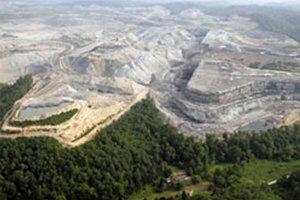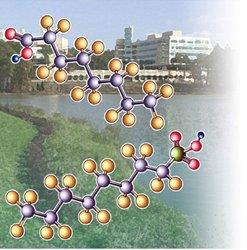EPA Science Matters Newsletter: Volume 1, Number 3
Published September 2010
Executive Message
- Executive Message
Extraordinary Times, Extraordinary Caution

Extraordinary times call for extraordinary measures. They also call for extraordinary caution. In the current oil spill crisis in the Gulf of Mexico, EPA is engaging in both. There is no doubt that the Gulf tragedy is among the worst, if not the worst, environmental disaster in U.S. history. While we cannot erase the terrible impacts of this catastrophe, we must do everything in our power to prevent them from reaching their full potential.
The Gulf Coast is one of the most fertile in the world. The potential devastation to this economically and environmentally precious ecosystem is tremendous.
What has happened? Aggressive actions have been taken to keep oil away from the Gulf’s irreplaceable estuaries. Skimming, burning, and booming were employed and dispersants were applied to keep toxic oil away from the shore. No one wanted to use dispersants; they were applied as an effort of last resort. That is why extraordinary cautions have been taken every step of the way: constant monitoring for dissolved oxygen levels, toxicity tests on the small organism the rotifer, and the determination of particle size to determine if the dispersant was working as intended. The testing day-in and day-out is a manifestation of our recognition that even in cases where you truly believe a particular trade-off is necessary, you never act with the arrogant assumption that your actions are correct. Instead, you must constantly question, verify, and validate your actions with monitoring, analysis, and use of the best available science and data.
What are the results? The data so far show that the dispersants tested are similar to one another and fall into the “slightly-toxic” or “practically nontoxic” categories and do not persist in the environment. The data also show that the oil-dispersant mixtures are no more toxic to aquatic species than oil is alone. Dispersants make oil break down more rapidly in the environment and therefore decrease the oil’s ability to cause a wide range of well-known physical and chemical hazards. Does that mean all questions are answered? No. That is precisely why aggressive monitoring, testing, and questioning continue. Releasing dispersants into the ocean is an extraordinary action and it is clear that extraordinary prudence is required.
The term 'scientific integrity' is often used to describe an essential pillar of our work. It reflects our understanding that sound science is an irreplaceable necessity in ensuring the integrity of our actions and our decisions. In the absence of scientific vigilance, the integrity of our actions is questionable. The work of EPA scientists—both in the tragedy we currently face, and in upholding the Agency’s central mission—is an on-going tribute to the pursuit of environmental protection with integrity, honesty, and humility.
Sincerely,
Paul T. Anastas
Assistant Administrator
U.S. EPA
Office of Research and DevelopmentLearn More
-
EPA Response to BP Oil Spill Search EPA Archive
-
EPA's Toxicity Testing of Dispersants Search EPA Archive
-
EPA Research Highlights
- Testing the Toxicity of Oil Spill Dispersants
EPA scientists support federal response to the BP oil spill.

The U.S. Environmental Protection Agency (EPA) is providing full support to the U.S. Coast Guard, the leader of the coordinated federal response to the tragic events surrounding the BP Oil Spill in the Gulf of Mexico. A key component of EPA’s support is providing scientific and technical expertise.
Almost immediately after Louisiana sweet crude oil began gushing from the Deepwater Horizon oil well, scientists and engineers from EPA began mobilizing to set up environmental monitoring equipment and coordinate its support. EPA scientists are collecting and analyzing data from air, water, waste, and sediment samples from affected areas across the Gulf.
Among the first things EPA scientists were called upon to address was the need to conduct independent testing on the toxicity, including potential endocrine disrupting activity, of oil dispersants available for use in the Gulf.
Responding to the BP Oil Spill
The overall goal of actions taken in response to the unprecedented release of oil into the Gulf of Mexico is to minimize the known threat the released oil poses to the environment. Spill management strategies, practices, and technologies implemented include using sorbents, floating booms, and skimming operations to mechanically remove oil from the water, burning the oil in place, and applying dispersants.
Dispersants have properties that break down the oil, helping to prevent thick, sticky crude from fouling beaches or reaching ecologically sensitive coastal wetlands. Breaking the oil down into smaller droplets also promotes natural biodegradation, because the droplets can be ingested by tiny, oil-consuming marine microbes.
Toxicity Testing of Dispersants
To ensure that decisions about dispersant use in the Gulf of Mexico were grounded in the best available science, EPA began its own scientific analysis of eight dispersant products on the National Contingency Plan Product Schedule (NCP-PS). NCP-PS is a list of dispersants and other mitigating substances and devices that may be used to remove or control oil discharges.
The dispersant products EPA tested are: Dispersit SPC 1000, Nokomis 3-F4, Nokomis 3-AA, ZI-400, SAF-RON Gold, Sea Brat #4, Corexit 9500 A and JD-2000. (Corexit 9500 A is the dispersant BP applied offshore at the surface and in the deep ocean in response to the spill.)
During the first phase of testing, EPA scientists led a study assessing the acute toxicity of the dispersants alone (not mixed with oil) on the larval stages of two aquatic species considered representative of the sensitivity of many other organisms found in the Gulf of Mexico: mysid shrimp (Americamysis bahia), and the inland silverside fish (Menidia beryllina). Toxicologists have used the two species for years, and a long record of scientific literature confirms their efficacy in such studies.
In a related effort, over 80 in vitro tests from EPA’s ToxCast and endocrine disruptor research programs were used to test for endocrine activity and cytotoxicity (cell death).
EPA released peer reviewed results from the first phase of toxicity testing on June 30, 2010. The data showed that all eight dispersant products have roughly the same toxicity, and all fall into the “practically non-toxic” or “slightly toxic” category. Comparatively, JD-2000 and Corexit 9500A were generally less toxic to small fish and JD-2000 and SAF-RON GOLD were least toxic to mysid shrimp. Agency scientists also found that none of the eight dispersants displayed endocrine disrupting activity of biological significance.
The second phase of testing looked at the acute toxicity of multiple concentrations of Louisiana Sweet Crude Oil alone, and combinations of Louisiana Sweet Crude Oil with each of the eight dispersants. Again, mysid shrimp and the inland silverside fish were used to conduct the tests.
Results of the second phase of tests, released on August 2, 2010 indicate that the toxicities of the eight dispersants mixed with oil are roughly similar to one another. The results also indicate that dispersant-oil mixtures are generally no more toxic to the aquatic test species than oil alone.
As expected, all eight dispersants were found to be less toxic than the dispersant-oil mixture to both test species. Oil alone was found to be more toxic to mysid shrimp than the eight dispersants alone. Oil alone had similar toxicity to mysid shrimp as the dispersant-oil mixtures, with the exception of the mixture of Nokomis 3-AA and oil, which was found to be more toxic.
"EPA is performing independent tests to determine the potential impacts of various dispersants. We will continue to conduct additional research before providing a final recommendation," said EPA Administrator Lisa P. Jackson. "We want to ensure that every tool is available to mitigate the impact of the BP spill and protect our fragile wetlands. But we continue to direct BP to use dispersants responsibly and in as limited an amount as possible."
- EPA Science on Mountaintop Mining
Researchers release two scientific reports to support Agency’s new guidance for mountaintop mining.

“The people of Appalachia shouldn’t have to choose between a clean, healthy environment in which to raise their families and the jobs they need to support them.”
EPA Administrator Lisa P. Jackson made the above remarks when she announced a set of actions the Agency was taking to further clarify and strengthen environmental permitting requirements for Appalachian mountaintop removal and other surface coal mining projects. EPA issues permits for such actions in coordination with other federal and state regulatory agencies, including the Army Corps of Engineers.
“The underpinning for the guidance is a growing body of science demonstrating that degradation of ecosystems in Appalachian states is being caused by mountaintop mining,” explained Administrator Jackson.
The emerging body of science includes important research and analysis conducted by EPA scientists. Two new major EPA studies—The Effects of Mountaintop Mines and Valley Fills on Aquatic Ecosystems of the Central Appalachian Coalfields, and A Field-based Aquatic Life Benchmark for Conductivity in Central Appalachian Streams—were released in conjunction with the new guidance.
The two reports were published for public comment and submitted for peer review by the EPA Science Advisory Board.
Mountaintop mining is a form of surface coal mining in which the natural vegetation from the upper topography of a mountain is removed, and then heavy equipment and explosives are used to level the upper sections to expose seams of coal.
As the tops of mountains are removed, what was once the underlying earth and rock becomes valley fill, filling in adjacent valleys and burying nearby streams. Geographers estimate that almost 2,000 miles of small, upper level Appalachian “headwater” streams have been buried by mountaintop coal mining.
A number of ecological concerns surround mountaintop mining and valley fill. Much of that concern centers on water quality. Burial of headwater streams causes permanent loss of aquatic ecosystems that play critical roles in ecological processes, such as the cycling and flow of nutrients between the environment and living organisms and the stability of the food web. These small Appalachian streams also support abundant and diverse types of aquatic organisms that are unique to the area.
In addition, the removal of natural vegetation and physical changes to the soil and topography greatly impact water runoff, flow, and quality. Water that flows over and through valleys with valley fill is known to contain greatly elevated concentrations of chemical ions (salts), as well as other substances. A growing body of scientific literature, including studies conducted by EPA researchers, shows significant damage to local steams that are polluted with the mining runoff from mountaintop mining.
The new guidelines clarify actions that EPA will take to protect Appalachian ecosystems as the Agency follows its mandate to uphold and enforce the Clean Water Act. The two new science reports were produced to provide the Agency with the best available science for crafting the guidelines.
The Effects of Mountaintop Mines and Valley Fills on Aquatic Ecosystems of the Central Appalachian Coalfields provides a state-of-the-science assessment on the ecological impacts of mountaintop mining and valley fill operations. EPA researchers identified and reviewed some 277 citations, including books, conference proceedings, journal articles, reports, theses/dissertations and other sources to present a single-volume assessment of the latest science available on the aquatic impacts associated with mountaintop mining.
The analysis identifies five key impacts directly related to mountaintop mining and valley fill:
- springs, intermittent streams, and small perennial streams are permanently lost with the removal of the mountaintop and from burial under fill,
- concentrations of major chemical ions are persistently elevated downstream,
- degraded water quality reaches levels that are acutely lethal to standard laboratory test organisms,
- selenium concentrations are elevated, reaching concentrations that have caused toxic effects in fish and birds and
- macroinvertebrate and fish communities are consistently and significantly degraded.
The second report, A Field-based Aquatic Life Benchmark for Conductivity in Central Appalachian Streams, provides the scientific basis for using a field-data-derived, conductivity-based measurement as the benchmark for water quality in order to protect aquatic organisms living in Appalachian surface waters.
Conductivity is a measure of the level of salinity (salt) in the water. Because mountaintop mining operations can raise the salinity levels of nearby streams, measuring it provides an indication of those operations’ impacts on water quality. EPA scientists conducted more than 2,000 field samples to derive a conductivity benchmark that protects 95% of the genera (sets of similar and closely related species) of aquatic organisms living in streams in central Appalachia.Key findings of the report include:
- Concentrations of salts as measured by conductivity are, on average, 10 times higher downstream of mountaintop mines and valley fills than in un-mined watersheds.
- The increased levels of salts disrupt the life cycle of freshwater aquatic organisms, and some cannot live in these waters. Water with high salt concentrations downstream of mountaintop mines and valley fills is toxic to stream organisms.
- There are also higher levels of the chemical selenium downstream of mining sites. Selenium exceeded the level established by EPA to protect aquatic life at more than half of the sites surveyed downstream of mountaintop mines and valley fills.
- By plotting the conductivity levels at which organisms are no longer observed in streams, we can determine a level of conductivity that results in their loss.
- EPA identified a conductivity benchmark (300 microSiemens per centimeter) that protects 95% of the genera of aquatic organisms living in streams in central Appalachia.
The two reports were produced to provide the best available science on the environmental impact of mountaintop mining. “We will continue to work with all stakeholders to find a way forward that follows the science and the law,” said Administrator Jackson.
Learn More
- Biodiversity and Human Health: Exploring the Connections
EPA scientists and partners examine the links between biodiversity and human disease

Gerry Gray was a competitive swimmer in college, has completed triathlons, and regularly trains for long-distance cycling events. But while the occasional 100-mile bike ride won’t slow him down, a weekend camping trip in the woods left him exhausted on and off for years. Gray, a Ph.D. statistician with the Food and Drug Administration, is one of a growing number of people diagnosed every year with Lyme disease.
Gray is not alone. Lyme disease is now the most frequently reported vector-borne disease in the United States. The illness is one of several emerging infectious diseases—along with West Nile encephalitis, malaria, hantavirus pulmonary syndrome, and schistosomiasis—that have been on the rise over the past several decades.
Over the same time period that public health officials have been tracking the emergence and re-emergence of a number of infectious diseases, ecologists and other scientists have been documenting a steady decline in biological diversity, the number of species and other measures of the variety of life on earth. Are the two related? EPA scientists are working to find out.
“The connections between biodiversity and human health—particularly emerging and reemerging diseases—have not been well studied,” explains EPA environmental and public health scientist Montira Pongsiri, Ph.D, MPH. “EPA established the Biodiversity and Human Health research initiative to develop and sponsor both pilot and long-term, transdisciplinary research projects to better understand how human-caused stressors that lead to biodiversity loss—deforestation, habitat fragmentation, and climate change—are related to the transmission of diseases to humans. We can apply this knowledge to develop environmentally-based (non-chemical) tools, such as ecological indicators of disease risk and quantitative and spatially-explicit models of disease risk, that decision-makers can use to reduce and perhaps prevent disease.”
Pongsiri and research partners present their review of several case studies that examine the links between biodiversity and human health, along with a typology of proposed mechanisms, in a paper in the December 2009 science journal Bioscience.
One EPA-supported project, entitled “Mechanisms Linking Host Biodiversity to Lyme Disease Risk: an Experimental Approach” is being conducted by ecologist Richard Ostfeld, Ph.D. of the Cary Institute of Ecosystem Studies. Ostfeld is a pioneer in exploring how declining species diversity in eastern U.S. forest ecosystems relates to the transmission of the bacterium that causes Lyme disease from animal host to tick, and from tick to human.
Ostfeld is investigating how differences in animal community composition in forest plots relate to the density of black-legged tick vectors and the infection rate among those ticks, and hence risk of Lyme disease transmission. He’s conducting his research in Duchess County, N.Y. a hotspot of Lyme disease. What he expects to result from these studies is a quantitative model of human disease risk based on ecological data, which can be used by local and state health departments and land use planners.
Other EPA-funded studies include:
- A Rutgers University-led investigation of the relationships between diversity in plant, bird, and mosquito populations and West Nile virus prevalence in urban wetland communities in northern NJ. Study results can inform new “biocontrol” methods for mosquito control, as well as yield new insights on wetlands preservation that is beneficial to public health.
- A research team from the University of California at Los Angeles is studying the role that migratory birds play in West Nile Virus transmission. Researchers are using earth observations to better understand how climate and human-caused changes to the environment might predict risk.
-
The studies are fostering partnerships among ecologists, epidemiologists, land use planners, and local and state governments to share scientific advances and new risk prevention strategies that can be applied from individual homes to entire landscapes. The interdisciplinary partners in each study are working together with EPA and Regions to plan the implementation of the research tools and products.
“When we better understand the mechanisms linking biodiversity and human disease through our research, we will be better equipped to develop environmentally-based and behavioral approaches that can simultaneously promote conservation and reduce the risk of human disease—which would be a win-win for the environment and for public health,” says Pongsiri.
Learn More
- EPA Biodiversity and Human Health Research Search EPA Archive
-
United Nations Proclaims 2010 International Year of Biodiversity Exit
- Streams of Science
EPA scientists use a unique Experimental Stream Facility to explore the health of stream ecosystems and watersheds.

To better understand the importance of small-stream ecosystems and the dangers posed by pollutants, EPA scientists are conducting research at a unique, state-of-the-art laboratory: the Experimental Stream Facility (ESF). The facility, located in Milford, Ohio, allows researchers to bring natural stream water indoors where they can conduct highly-controlled experiments.
The maintenance and protection of watersheds—the natural land areas that drain to common waterways—is vital to the protection of ecosystems and human health. Watersheds supply drinking water, sustain life, and provide means for recreation. While small-stream ecosystems comprise around 90% of the river miles in the United States and an even greater percentage of the linear drainage footage in any watershed, their overall importance to water quality is not yet well understood.Stream ecosystems are largely overlooked in watershed management and left unregulated. As a result, they are often replaced in land development projects with culverts, storm sewers, or lined ditches, eliminating their potential to play a role in maintaining water quality.
“You can think of small stream systems as your blood vessels carrying all these things coming from the landscape into larger water bodies, but we don’t really factor them in when we are doing watershed modeling calculations,” explains Christopher T. Nietch, Ph.D., a systems ecologist and lead scientist at the facility.
The facility combines the advantages of a controlled laboratory setting with the natural variability of field studies. In a natural stream, assessing how individual pollutants and other stressors affect the ecosystem is difficult due to the various pollutants in the environment and other uncontrollable variables. The technology at ESF, however, enables precise manipulation of variables like light intensity, stream length, water source, contaminant dose, and flow rate. Therefore, the effects of contaminants can be studied and interpreted in a more conclusive way.
Scientists at the facility are developing novel methods for detecting changes in water quality. For instance, clam opening and closing behavior is monitored in tanks at the end of the stream channels (or “mesocosms”) and can signal the presence of environmental stressors before traditional warning signs, such as decline in algae growth, occur. This type of monitoring has the potential to serve as an early warning system for contaminant spills and diminishing water quality.
Technology in the ESF continuously monitors water quality and characteristics as well as climate conditions both in the facility and in the nearby local streams. “We’ve spent a great deal of time trying to ensure realism in our studies,” Nietch stated, “and we spend a lot of time doing field work in real streams taking real measurements that we then use to guide experiments inside the lab.”
The studies conducted at ESF are designed to obtain quantifiable data on the relative importance of small-stream ecosystems to watershed management. They also test how different contaminants affect aquatic organisms and ecosystems in order to determine which pollutants are the most important to regulate. This unique and advanced facility is amassing data that is very relevant to environmental decision making and to the future of watershed management.
Learn More
- Getting Smarte
EPA's Sustainable Management Approaches and Revitalization Tools-electronic (SMARTe) helps communities plan for the future.

When most people think of a hospital, they picture images of a big, white building filled with bustling doctors and nurses. Clean. Efficient. Organized. Perhaps that once fit the description of the former Cardwell Hospital of Stella, Missouri. But by late 2005, the long since abandoned building was a dilapidated, ghost of a structure with a failing roof, peeling paint, and ruptured, asbestos-laden pipe insulation and floor tiles.
Time and neglect had turned a place of healing into a health hazard.
The Village of Stella acquired the property in July, 2005 and surrounded it with a barrier fence. EPA officially declared a need for a “Time-Critical Removal Action” for the site. The Agency would carefully raze the old structure, remove friable asbestos and other contaminants, and rehabilitate the overall site enough to “reduce the threat posed by airborne health hazards to trespassers or children at or in the vicinity of the building.”
By August 2006, the building was gone, and some 2,000 tons of debris were hauled away and safely disposed of under EPA supervision. The town of Stella was eager to turn the loss of the old hospital into an opportunity not just to rebuild on the site, but revitalize the downtown area, and perhaps spark a sense of renewal for the entire community.
That’s when the town got SMARTe.
Sustainable Management Approaches and Revitalization Tools- electronic (SMARTe) was developed through a collaboration between scientists, land use planners, engineers, and other specialists from the German Federal Ministry of Education and Research, the Interstate Technology and Regulatory Council, and EPA. It is a web-based resource that provides information, a suite of tools, and decision-support applications to assist communities such as Stella with redeveloping contaminated and potentially contaminated properties.
The goal of SMARTe is to provide an easily-accessible, user-friendly “one stop shop” for any community faced with revitalizing a contaminated site. It contains information and tools for a wide diversity of aspects pertaining to the revitalization process, including finding sources of money, strategic planning, risk assessment and risk management, and community involvement. To foster partnership building and cooperation, SMARTe provides a virtual gathering spot, allowing multiple stakeholders to come together in a web-based environment to evaluate, discuss, and build consensus on different reuse options for a specific site or apply sustainable concepts across larger areas.
The SMARTe site currently receives between 40,000 and 50,000 hits per month from over 90 different countries. Due to the success of the American site, The Hemholtz Centre for Environmental Research in Germany is developing its own German version (DE.SMARTe). This process is part of a Cooperative Research and Development Agreement with EPA and will provide a more complete picture of the work being done internationally. New features on DE.SMARTe will eventually be incorporated back into the original site.
Stella, a community of less than 200 people, lacked the resources to tackle an extensive revitalization project on its own. But that small size was also an advantage, making the town an ideal place to put the emerging tools and support programs of SMARTe to the test in a real world situation. A member of the SMARTe development team from Kansas State University introduced the idea of using the resource to some Stella citizens and board members, and a partnership was born.
EPA Scientists provided technical expertise to complement the resources in SMARTe, and worked closely with the community to create a master plan that went far beyond rebuilding on the rehabilitated former hospital site. Instead, they created an innovative master plan that could serve as a case study for rural communities dedicated to rebuilding economic and social structures while simultaneously protecting the natural environment.“The EPA-developed master plan gave Stella’s citizens a physical representation of their vision and opportunities to become involved in its future. It gave our laboratory the opportunity to apply a strategy and theory that we hoped would enable land-use decisions to be made now that would meet human objectives while assuring that the natural, social, and economic systems are able to sustain the community,” explains EPA community planner and architect Verle Hansen on the web site of the National Building Museum. The museum featured Stella’s use of SMARTe and additional EPA technical support in its Green Community, an exhibit and Web site exploring the design of sustainable communities.
A number of community projects outlined in the master plan for Stella—including creating a streamside park for residents, building a new veteran’s memorial, and organizing a farmer’s market—are now under way. These projects are small steps on the path toward sustainability, helping beautify the community at a reasonable cost along the way.
Based on what they learned working with communities such as Stella, the SMARTe team is working towards developing new features to offer, such as a “sustainability calculator,” that will help land use planners consider sustainability over larger areas.
The breadth of information and diversity of disciplines available through SMARTe and EPA is proving to be an invaluable resource for helping communities plan for a sustainable future. It has already helped a small community in rural Missouri turn an abandoned, dangerous former hospital site into an opportunity for the future.
That’s SMARTe thinking.
Learn More
- SMART-e Exit
- Green Community Exit( Exhibit Web site from the National Building Museum)
- Providing Answers to Chemical Safety Concerns
EPA brings top scientists together to share information about perfluoroalkyl acids.

Some perfluoroalkyl acids (PFAAs), a class of chemicals used in a variety of consumer products, have been identified by the U.S. Environmental Protection Agency (EPA) as potential threats to human health and the environment. The chemicals are a global concern because they are manufactured and released around the world, appear in most humans, sometimes at high concentrations, have been found in arctic mammals, and have contaminated water and soil.
EPA brought together leading researchers studying PFAAs in the United States and other countries at the 3rd Biennial PFAA Days Workshop, held June 8-10 at research facilities in Research Triangle Park, N.C. The workshop provided an opportunity to share recent findings and to explore potential partnerships.
At EPA laboratories, a considerable research effort to better understand PFAAs has been underway. The effort reflects EPA Administrator Lisa P. Jackson’s high priority to ensure the safety of chemicals, explained Kevin Teichman, deputy assistant administrator for science in the Agency’s Office of Research and Development (ORD), during his opening remarks at the workshop.
EPA has one of the largest groups of scientists studying perfluoroalkyl acids, providing expertise in many disciplines, said Elaine Francis, national program director of the Safe Pesticides/Safe Products Research Program and one of the workshop organizers, along with Chris Lau, an EPA scientist studying PFAAs. More than 60 articles in peer-reviewed publications have been produced by EPA researchers over the past four years to improve the understanding of the health and environmental impacts of these chemicals, she said.
EPA’s research program has evolved over time. Researchers first focused on the potential toxicity of PFAAs using animal models, and have expanded their efforts to examine how people are exposed, how the chemicals may degrade in soil, what happens to them after they enter wastewater treatment plants, how the chemicals are released from products in commerce and, more recently, what their properties are in biosolids. The research supports ongoing efforts by EPA to reduce the potential health and environmental impacts of PFAAs.
EPA research highlights at the workshop included:
Finding PFAAs: Determining where PFAAs go in the environment after they are released requires robust measurement methods. EPA researchers have developed analytical methods that enable scientists and water quality managers to determine if PFAAs are in the environment and at what concentration.
Monitoring Market Trends: In 2006, EPA initiated the PFOA Stewardship Program. (PFOA, or perfluorooctanoic acid, is a type of PFAA). Eight major companies in the program committed to voluntarily reducing facility emissions and product content of PFOA, and related chemicals, by 95 percent by 2010 and to work toward eliminating emissions and product content of these chemicals by 2015. EPA scientists are supporting those goals.
EPA researchers are testing consumer products in 12 categories to evaluate whether companies are reducing PFAA content in their products under the program. Preliminary observations show a significant reduction of PFAAs in mill-treated stain-resistant carpeting and some carpet treatment products. Other product categories are showing mixed trends. An interim report will be published in late 2011.
Identifying Biological Activity: How do PFAAs cause reproductive and developmental effects in rodents? Application of biologic methods is needed to understand potential toxic effects. Researchers are examining how PFAAs may interact with nuclear receptors, specific proteins that can alter genetic code and are important to the normal development of an embryo/fetus and maintenance of homeostasis (the body’s ability to regulate biological processes) in adults.
Determining Link to Obesity: EPA researchers are exploring whether PFAA exposure plays a role in the incidence of obesity and metabolic syndrome. The chemicals are being studied because of their potential ability to influence energy metabolism (how biological fuels such as fat and sugar are being stored or converted into energy).
In 2009, EPA issued provisional health advisories for two of the chemicals--PFOA and perfluorooctane sulfonate (PFOS)—in drinking water and developed action plans to address several other chemicals, including the long-chain PFAAs of new concern.
Some of the research presented at the workshop will be submitted to the journals Reproductive Toxicology and Environmental Science and Technology, which plan to publish special issues on PFAAs.
Learn More
- Better Burning, Better Breathing: Cleaner Stoves
EPA researchers are testing performance and emissions of solid-fuel cook stoves.

The following links exit the site Exit For most Americans, cooking on an open fire is a novelty enjoyed outdoors a few times a year. But for about half the world's population, it is a daily necessity. Instead of cooking with gas, oil, or electricity, they burn wood, dung, coal, or other solid fuels. For this population, a kitchen is primarily a place to build a fire.
According to the World Health Organization (WHO), an estimated 1.5 million people die prematurely each year due to exposure to smoke and other pollutants from the household use of solid fuels, while millions more suffer respiratory illness. The effect is greater on women and children because they tend to spend more time near cook stoves.
In a 2002 report, WHO listed indoor smoke from solid fuels among the top 10 risks to human health. "Day in and day out, and for hours at a time, women and their small children breathe in amounts of smoke equivalent to consuming two packs of cigarettes per day," WHO reported in the 2006 report Fuel for Life: Household Energy and Health.
As greenhouse gas emissions have increased, the smoke from kitchens in the developing world has escalated from a local to a worldwide threat. The average cooking fire produces about as much carbon dioxide as a car, and produces more soot, also known as black carbon. Reducing these emissions may be among the fastest, cheapest ways to fight global climate change.
Bringing better solid-fuel cook stoves to the 3 billion people who rely on them can improve human health, reduce cutting down forests for firewood, and decrease the emission of greenhouse gases and black carbon. As stated in the New York Times article Third-World Stove Soot Is Target in Climate Fight: "While carbon dioxide may be the No. 1 contributor to rising global temperatures, scientists say, black carbon has emerged as an important No. 2, with recent studies estimating that it is responsible for 18 percent of the planet's warming, compared with 40 percent for carbon dioxide."
Researchers from the U.S. Environmental Protection Agency (EPA) tested a number of household cook stove and fuel combinations for performance and air pollution emissions. The work was done to support the Partnership for Clean Indoor Air (PCIA), an association of more than 370 organizations contributing their resources and expertise to reducing smoke exposure from cooking and heating practices. PCIA was launched at the World Summit on Sustainable Development in Johannesburg, 2002.
The objectives of the EPA study were to:
- See if some cook stoves have improved fuel efficiency and lower pollutant emissions compared with the traditional "three-stone fire," (three stones placed around a fire to hold up a pot).
- Provide useful cook stove performance and emissions information to PCIA partners and others supplying stove technology to developing countries.
- Compare test results using the Water Boiling Test protocol with those of a PCIA partner, Aprovecho Research Center in Cottage Grove, Oregon.
Research results from the study, presented in the paper "Solid-fuel household cook stoves: Characterization of performance and emissions" (Biomass and Bioenergy Journal, Volume 33, Issue 2, February 2009) showed that some stoves currently used in the field offer the benefits of improved fuel efficiency and lower pollutant emissions compared with traditional cooking methods. Stoves with lighter, less dense materials exposed to the heat of the fire tended to cook faster with better fuel efficiency and lower pollutant emissions.
The study provided an independent evaluation of 14 stove/fuel combinations with an emphasis on modern cook stoves designed to reduce harmful emissions and improve fuel efficiency. It illustrated the importance of testing stoves, and presented useful information for improving the design of stoves. Test results using the latest stove technology had not been reported in the peer-reviewed scientific literature before. The study also shows that stove-testing results can be replicated between laboratories, and offers recommendations for improving the ability to replicate results. Publishing the results has been useful to the more than 300 partners in PCIA who design and promote new stove technology.
Now a more comprehensive, solid-fuel cook stove study is underway. Newer stove designs are being tested, and more air pollutants are being measured. EPA researchers are continuing to measure emissions of air pollutants that affect human health, including those that affect global climate.
Learn More
- Vast New Database System Streamlines EPA Science Assessments
EPA releases HERO database, providing transparent access to scientific studies used in making decisions to protect the environment and human health.

"Americans have a right to know the background of decisions that affect their lives and livelihoods. We're taking a big step forward in opening government to the people." This is how EPA Administrator Lisa P. Jackson announced the launch of the Health and Environmental Research Online (HERO) database in March 2010.
"The HERO database strengthens our science and our transparency -- two pillars of our work at EPA. Giving the public easy access to the same information EPA uses will help open the lines of communication, increase knowledge and understanding, and open the doors of EPA," Jackson said.
HERO is an open, accessible on-line database providing a wealth of scientific literature and information. The goal of the EPA scientists who designed the database is for it to provide easy access to all the scientific literature used in EPA’s health and environmental risk assessments.These scientific assessments serve as the foundation for key Agency decisions. HERO allows EPA scientists to search through and evaluate thousands of published research studies, and it allows the public access to the scientific studies EPA officials use in making regulatory decisions.
The access provided by HERO marks a significant milestone for EPA in the Agency’s open government directive to conduct business with transparency, participation, and collaboration. Now everyone has an easy way to search and analyze the scientific literature underlying the risk assessments used to support EPA decision-making. The database includes more than 300,000 scientific articles including the authors, titles, dates, and abstracts. The database is constantly growing as more studies are added.
One example of how scientists and the general public can use HERO is to analyze EPA’s periodic review of the National Ambient Air Quality Standards (NAAQS) required by the Clean Air Act. The Act requires EPA to set NAAQS for wide-spread pollutants considered harmful to public health and the environment. It requires periodic review of both the science upon which the standards are based and the standards themselves.
Mining the Scientific Literature
The growth of scientific literature is outpacing the ability of scientists to keep up without some technological help. The HERO database allows scientists to effectively categorize and integrate vast amounts of information and to strategically incorporate often conflicting and redundant evidence.
HERO includes peer-reviewed literature used by EPA scientists to develop the Integrated Science Assessments (ISA) that feed into the NAAQS review. ISAs are a special type of risk assessment. EPA is now using HERO to develop ISAs, thus providing easier access for scientists and the public to the many thousands of studies considered in the recent ISAs for particulate matter and for carbon monoxide.
Search strategies are developed by experienced information science professionals who work with the scientists to ensure the most complete results.
HERO’s design allows for it to be updated constantly as new studies are published. A team of information specialists use advanced search techniques to keep studies on relevant topics feeding into HERO. This enables EPA scientists to keep on top of the rapidly-growing body of literature, meeting their mission of assessing the state-of-the-science to protect human health and welfare.
EPA researchers and specialists are incorporating public input to enhance HERO's functionality. Visit Health & Environmental Research Online (HERO) to submit a comment, or to subscribe to HERO News, a periodic newsletter that informs HERO users of new features.
Learn More
